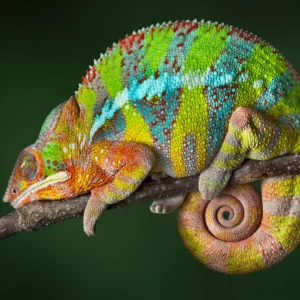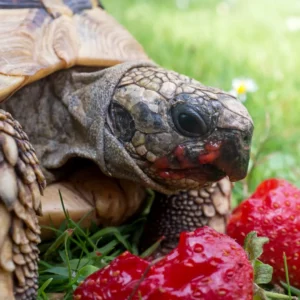Blog
Tortoise Food: How To Easily Make A Nutrient-Rich Homemade Diet
Embarking on the journey of nourishing your tortoise involves more than just offering a meal; it’s about creating a balanced and enriching experience. In this comprehensive guide, we delve into crafting a diverse and nutritious tortoise food using ingredients readily available at your local grocery store. Each element is carefully selected to cater to your tortoise’s well-being, ensuring they receive the essential nutrients for optimal health. Click here to watch our visual demonstration.
Tortoise Food Ingredients:
1. Romaine Lettuce:
- Why it’s Important: Romaine lettuce is not just a leafy green; it’s a powerhouse of fiber, low in oxalates, and an excellent source of hydration. The combination promotes digestive health, while the low oxalate content prevents potential mineral absorption issues.
2. Collard Greens:
- Why they’re Important: Collard greens offer a nutrient-dense addition to the tortoise food bowl. Packed with fiber, vitamins A, C, and K, and calcium, they play a crucial role in supporting shell development and bolstering the immune system.
3. Zucchini:
- Why it’s Important: Zucchini provides a refreshing burst of moisture and a balance of vitamins A and C. Its low oxalate content ensures a safe and hydrating component in your tortoise’s diet.
4. Bell Peppers:
- Why they’re Important: Bell peppers bring a burst of color and nutrition to the tortoise food. Rich in vitamin C and antioxidants, the variety in colors ensures a diverse mix of nutrients for overall health and vitality.
5. Carrots:
- Why they’re Important: Carrots are more than a familiar treat; they are a rich source of beta-carotene, a precursor to vitamin A. This nutrient is essential for maintaining eye health, promoting skin integrity, and supporting immune function.
6. Butternut Squash:
- Why it’s Important: Butternut squash introduces a delightful balance of fiber, vitamins A and C, and moisture. This combination supports digestive health and contributes to overall well-being.
7. Strawberries:
- Why they’re Important: Beyond sweetness, strawberries offer vitamin C and antioxidants, providing a tasty and nutritious addition that adds diversity to the tortoise’s diet.
8. Blueberries:
- Why they’re Important: Blueberries bring more than a burst of color. Packed with antioxidants, they offer variety and mental stimulation for your tortoise, enriching their feeding experience.
9. Parsley:
- Why it’s Important: Parsley, often underestimated, is a nutrient-dense herb providing vitamins A, C, and K, along with calcium. It adds flavor and nutritional depth to the tortoise food.
10. Timothy Hay:
- Why it’s Important: Timothy hay is a staple in a tortoise’s diet, offering essential fiber for healthy digestion and aiding in the natural wearing down of their beaks.
11. Calcium Supplement:
- Why it’s Important: While not a natural ingredient, a calcium supplement is crucial for ensuring proper shell and bone development. Consulting with a veterinarian helps determine the appropriate supplementation for your tortoise’s specific needs. Be sure to never over supplement, excessive calcium intake in tortoises can lead to a condition known as hypercalcemia, which is characterized by elevated levels of calcium in the blood. This can result in various health issues.
Conclusion:
Crafting a nutrient-rich tortoise food bowl involves a thoughtful selection of ingredients that mimic their natural diet. This comprehensive guide ensures a diverse and balanced feast for your tortoise, promoting overall health, shell development, and mental stimulation. Always monitor their diet, adjust portions based on their size and activity level, and consult with a reptile veterinarian for personalized dietary advice. A well-nourished tortoise is a happy and thriving companion in your home. CLICK HERE to use our Turtle Nutrition Calculator, master your Tortoise’s nutrition today!



